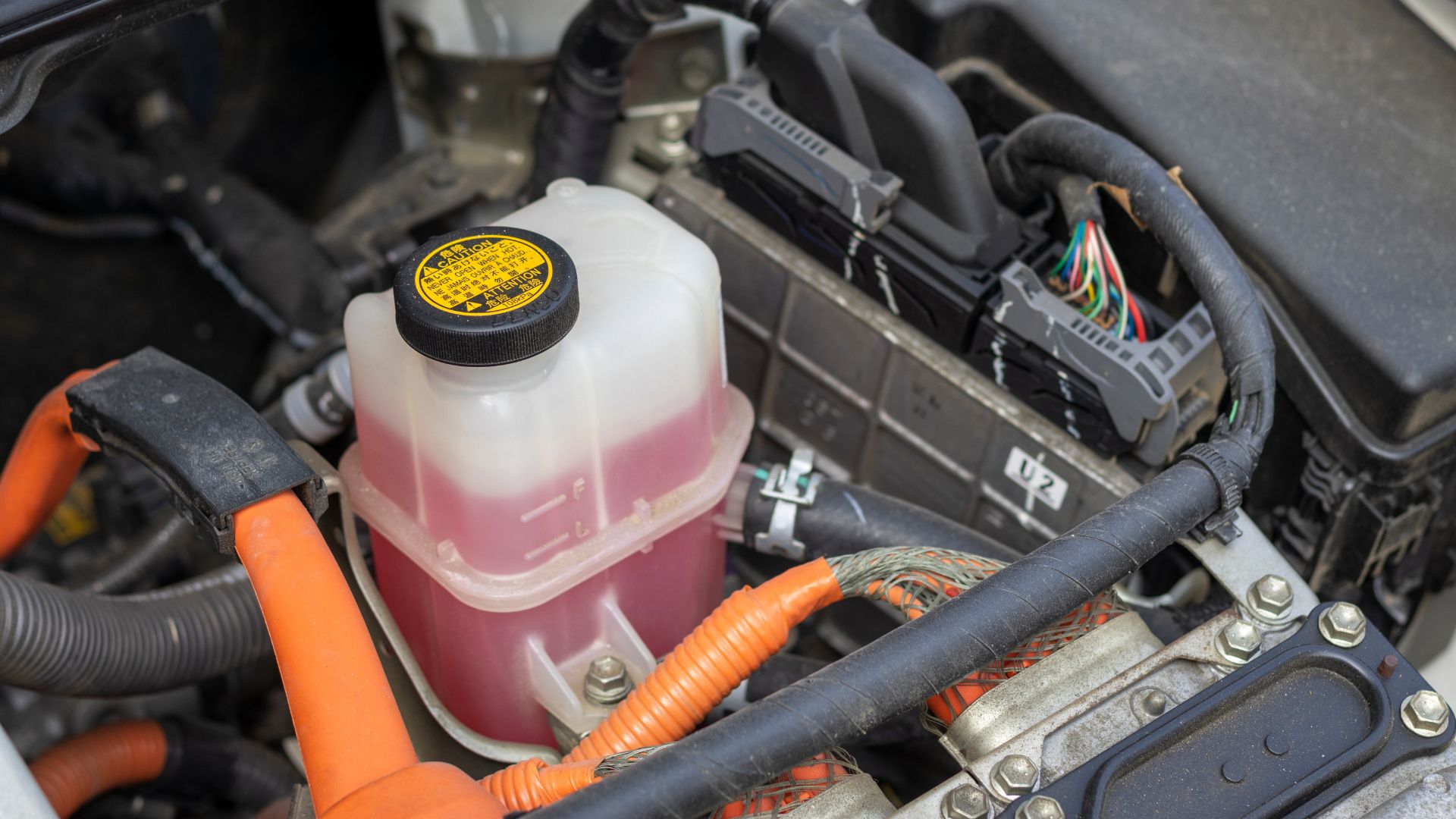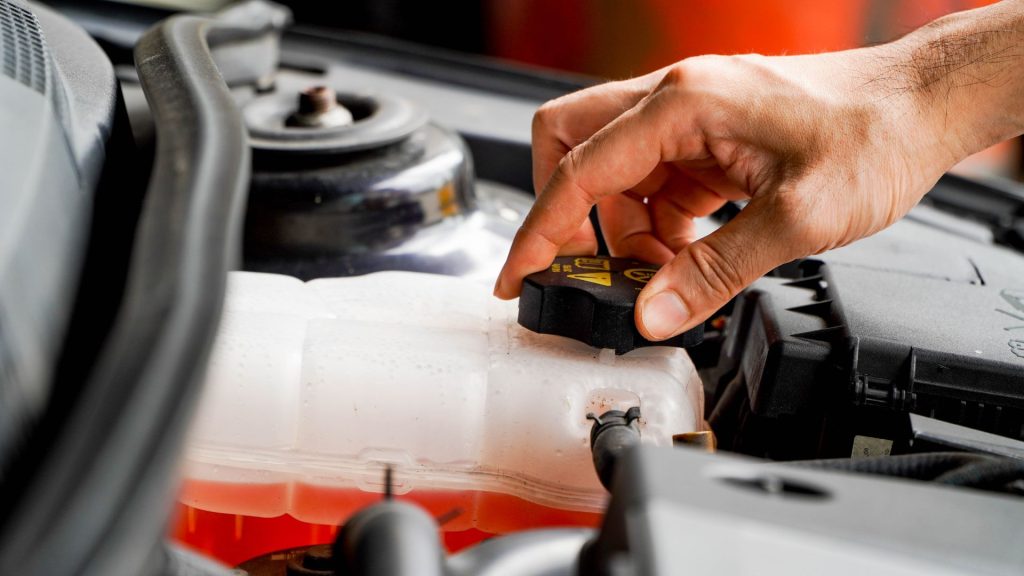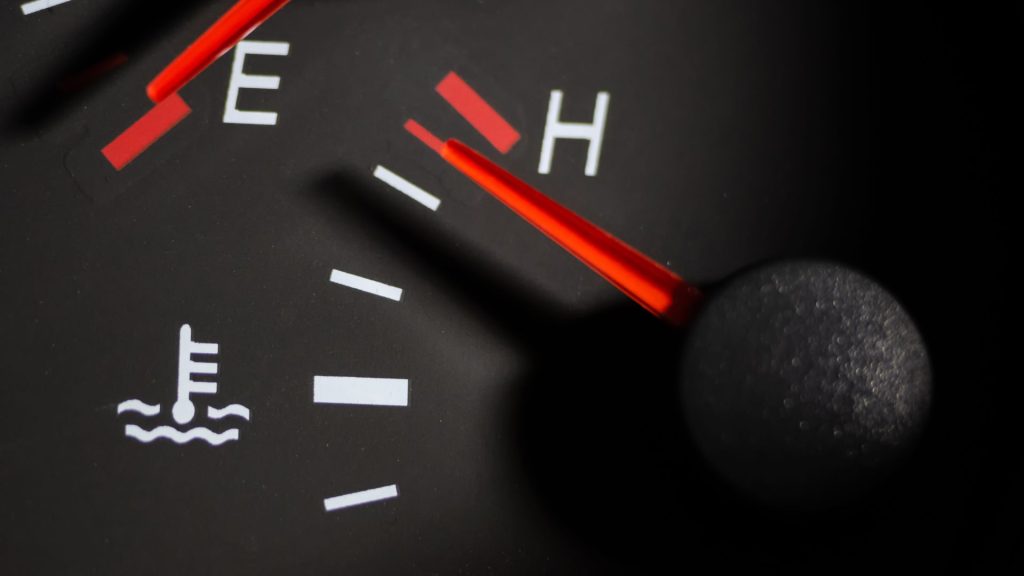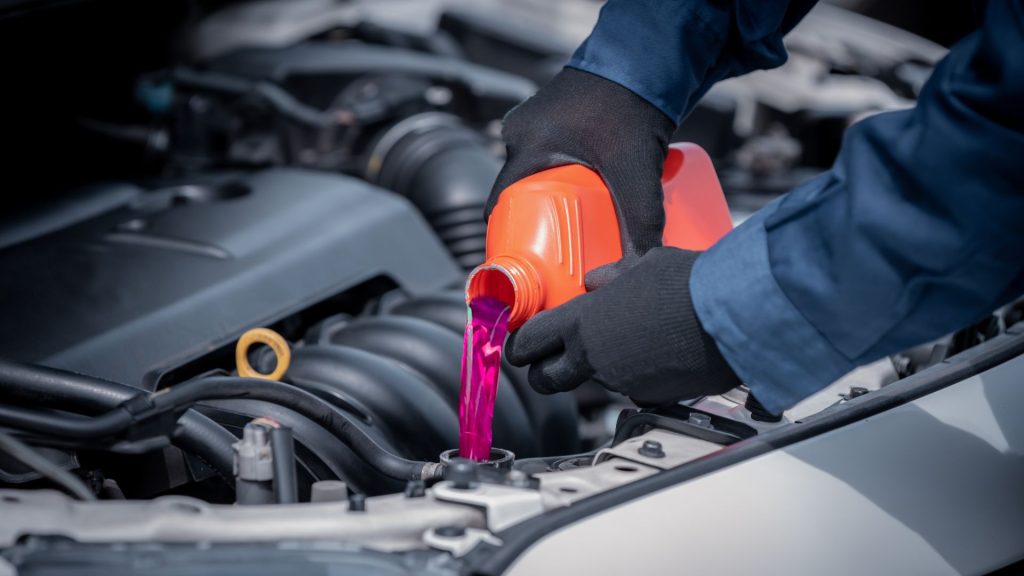How much coolant should be in the reservoir?
Maintain the optimal coolant level in your vehicle's reservoir.

Coolant is a crucial element of every functioning cooling system and engine. Understanding how coolant works and how much of it should be in the reservoir can save you the stress of running to the mechanic every time or, in the worst case, losing your engine within a few minutes. But sadly, this is where many car owners make mistakes.
It is essential to note that a shortage of coolant can cause the engine to overheat, and an excess of coolant can increase the cooling system’s pressure. On this note, the coolant in the reservoir or overflow tank must not be too little or too much; it has to be adequate.
You are probably wondering how much coolant should be in the reservoir for it to be adequate and not halt our trip on the road. Read on to discover more about saving your car from coolant-related issues.
How much coolant should be in the overflow tank?

The coolant reservoir holds the coolant when the fluid heats up while the car runs. The coolant in your reservoir should be the precise quantity needed at every point. Not too little and too much, as both can affect the system and the engine. When there is not enough coolant, it generates excess heat, which causes the engine to overheat and results in further damage to your engine. On the other hand, you don’t want the coolant reservoir overflowing either.
You might want to stop your vehicle from overheating by edging the coolant on the filler neck. That, too, is wrong and can cause a problem. Filling the overflow tank above the maximum level would not allow the coolant to expand as it should. If the coolant expands without knowing where to go, it causes the system and the engine.
It is ideal to fill the coolant reservoir to at least 30% of the tank. Two marks on the overflow tanks indicate the minimum and maximum levels. The minimum mark tells you the lowest amount of coolant your engine needs; anything below that amount may cause overheating problems. The full mark, too, shows the highest amount your engine can handle without any damage.
Since there has to be space in your overflow tank for the coolant to expand correctly, it is advisable to put it slightly above the minimum mark and keep your eyes on it for refilling.
Possible consequences of an overfilled coolant reservoir

The following things can happen if you fill the car’s coolant reservoir:
Coolant waste
The first noticeable sign of a tank above the maximum level is finding a coolant puddle on the floor. Excess coolant in the reservoir tank overflows through the overflow hose to the floor, resulting in coolant waste. This overflow can also cause potential damage when it comes in contact with some cooling system components.
Excessive pressure buildup
The cooling system can handle a certain amount of pressure at an average coolant level. Increasing the coolant level also increases the pressure on the system. The excess pressure can stretch thin metal hoses and seams and rupture them. When this happens, the coolant fluid pops out of the vent cap to the radiator.
In a situation where the vent cap of the tank is non-functional due to tightening or corrosion, the coolant reservoir would pop out the built-up pressure through the freeze plug. There could be other damages, such as a blown head gasket, a warped cylinder head, or a cracked engine block.
Electrical damages
Although the likelihood of having electrical damage caused by overfilled reservoirs is rare, it is the most disastrous occurrence. Some automakers route hoses over the engine’s wiring harness to keep these components away from hot areas. If the overflowing coolant gets in contact with this wiring, electrical failure may occur.
The excess pressure caused by the overflowing coolant can also damage delicate wires or make them fray at their connections. This damage could lead to dimming headlights while driving, malfunctioning brake lights, battery leakage, or your car not starting. Devices like the alternator, spark plugs, engine sensors and controllers, ignition coils, etc. may also be affected and thwart the engine’s performance or stop it from running.
Overheating
The problem you try to avoid will inevitably come back to haunt you if you overfill the coolant in your reservoir. The engine can get too hot due to excess pressure in the system. If the vehicle cannot cool itself under this condition, it can lead to severe damage to other components, and your engine will overheat.
Also, damaged seals and gaskets can allow the engine oil to flow into the cooling system, resulting in oil contamination of the coolant and a loss of oil pressure leading to overheating.
Mess in the engine compartment
Many cars have no overflow hose to pass the fluid below the engine. If this is the case in your vehicle, the overfilled coolant will spray into the engine compartment. Even if it doesn’t cause immediate damage, you should clean off the mess from the engine compartment. When the coolant contacts the hot metal components beneath the hood, it will give out a strong burning coolant smell in and around the vehicle, which could lead to health complications if inhaled.
Environmental hazards
Most coolants used in automobiles have Ethylene glycol as the active ingredient. It makes the coolant toxic to be inhaled or swallowed and can burn the skin on contact. Ethylene glycol does not evaporate quickly and has a sweet taste that can lure children and animals.
It would help if you kept coolant out of the reach of children and animals, including the puddle. If your car doesn’t have a cap with a pressure release, apply extreme caution when filling the reservoir.
Loss of money
You will undoubtedly lose money if your engine develops a fault due to overflowing coolant. For starters, electronic components could be costly to fix, and you would need a professional to do it. And, if your engine gets damaged, it will need immediate replacement.
How to check coolant levels

It is essential to check your coolant level from time to time, especially during road trips in hot weather conditions. Ensure you do not have insufficient or excess coolant in your reservoir before hitting the road.
To do this, locate the coolant reservoir and check the lines printed on the sides. In some vehicles, the minimum line is an “L” for low and an “F,” meaning Full. If the coolant level is low, add some coolant until it slightly passes the minimum mark. If the coolant level is above the maximum, flush out the excess coolant from the system.
It is best to do this when the engine is off to avoid burns from the overflowing or the radiator. If you notice any symptoms of low coolant like the engine overheating, stop your vehicle immediately to prevent further damage.
Always use the appropriate coolant for your vehicle, as stated in the owner’s manual. If you notice early warning signs of coolant issues, such as the engine is hotter than it should or seeing a coolant puddle when you park your car, fix it as soon as possible before the problem becomes more disastrous.
Our take
Without the right amount of coolant in the reservoir, it will take about five minutes of driving for your car to experience severe damages that can cost you the entire engine. It doesn’t also mean you should overfill the tank to the filler neck, as too much or too little coolant in the system can cause damage.
It is best to check your reservoir regularly and ensure that the coolant is adequate and slightly above the minimum mark. Always adhere to the user’s manual to know the coolant type, the quantity required, and what to do when you notice coolant-related problems.
Should I fill my coolant reservoir to the top?
No. Filling your coolant reservoir to the top is as disastrous as an empty reservoir.u003cbru003eWhen filling your overflow tank, ensure that you only fill 30 percent to leave space for the coolant to expand when the engine is running. When the system gets hot, it pushes the overflow back into the overflow tank, changing the tank levels.u003cbru003eu003cbru003eIf you fill the tank 100 percent, it tends to overflow and splashes on other engine compartment components, and it also increases the pressure of the cooling system, leading to damage. You don’t want to lose your engine while trying to protect it.
How much does a coolant reservoir hold?
The quantity of coolant your reservoir can hold depends on the engine and cooling system. While a large V-8 engine could take more than 16 quarts of coolant, a small V-4 engine can only hold about 6-7 quarts.
Should my coolant reservoir be full when cold?
The coolant reservoir doesn’t have to be full or less than the required amount whether your vehicle is on the road or cooling off, because coolant always needs extra space. The extra length prevents damage to the engine and hoses.u003cbru003eu003cbru003eWhen the coolant is hot, it expands and contracts as it cools. When cold, you may have to add more coolant than usual but always ensure that it is between the full and the low mark.
What happens if you put too much coolant in the reservoir?
The coolant reservoir can only handle a small amount of coolant. Putting too much coolant fluid puts excessive pressure on the cooling system, which can lead to possible damage to the engine. It could also lead to environmental hazards, electrical failure, and damage to other engine components resulting in overheating and catastrophic damage to the engine.